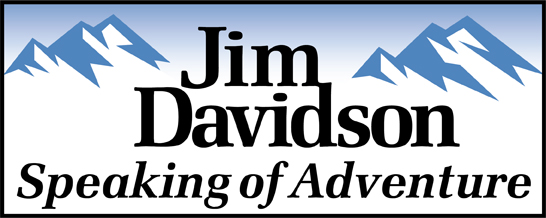Trekking & Training
There are no motor vehicles in the mountains of Nepal. The peace and silence is a blessing. Everyone walks everywhere, as they have forever. This deep tradition led to great trading routes, including the trans-Himalayan trade routes that Nepal developed with neighboring countries.
As tourism came to Nepal in the 1960’s this walking tradition led to the development of trekking. Trekking is hiking for fun and exploration. You do not need to be a super fit climber to trek. Any reasonably fit person can trek, as long as you go slow. Prior hiking and backpacking experience is helpful, and more fitness is always better when you are walking uphill in the ever thinner air.
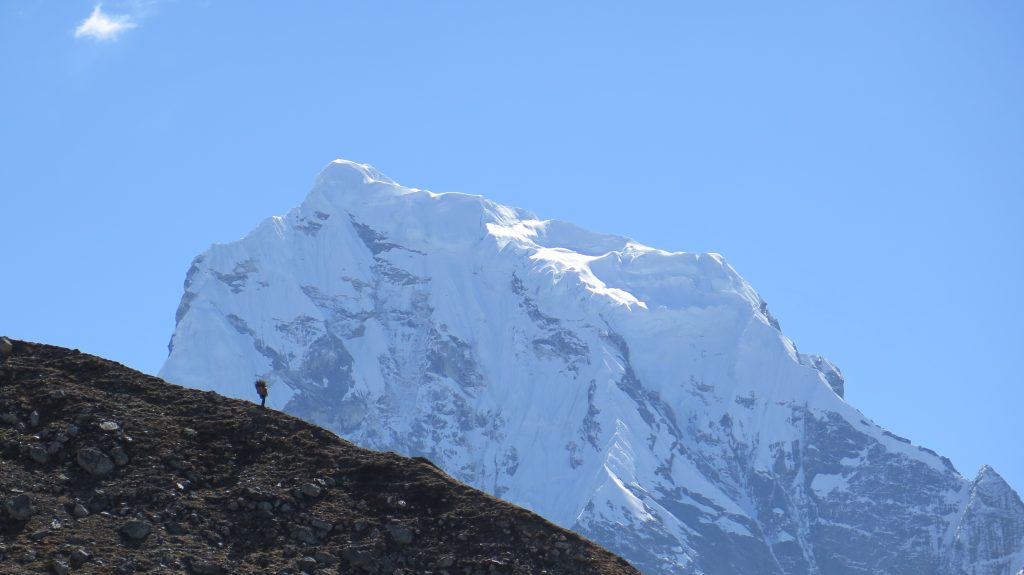 Trekking in Nepal is like backpacking from lodge to lodge, or hut to hut. You need not carry a heavy pack as in every village you can get a simple bed and meal. In the Khumbu valley near Everest, there is a village every hour or two. The pace is unhurried, the people friendly, and views always spectacular.
Trekking in Nepal is like backpacking from lodge to lodge, or hut to hut. You need not carry a heavy pack as in every village you can get a simple bed and meal. In the Khumbu valley near Everest, there is a village every hour or two. The pace is unhurried, the people friendly, and views always spectacular.
I first trekked Nepal in 1992 with my wife, Gloria. Over 20 days we covered about 120 miles on foot and had some powerful experiences, We were in Nepal not just for fun and exploration, but also for a more sacred purpose. We intended to have a ceremony, a pueja, at the foot of Mount Everest in remembrance of our deceased friend, and my climbing partner, Mike Price. Ultimately, we had a deeply moving ceremony at 18,000 feet, which we chronicled in our book, The Ledge.
Thus trekking is tied tightly in my head and heart with friends, climbing, adventure and spirituality. I came back to the Everest area to trek with climbing teams in 1998 and 2015. The Khumbu Valley is a magical place. I also had learned that many off-shoot areas promised, even more, adventure and beauty. So, with the help of the excellent team at International Mountain Guides, we created a plan for me to try one of these alluring side valleys during the approach to Everest base camp this year.
First, I trekked with my Everest teammates for five days, then I split off northwest up the Goyko Valley. I was not alone as I was accompanied by the vastly experienced Sherpa guide, Phinjo Sherpa from Phortse. We also relied upon Raz, a strong porter from the Rai ethnic group. While my teammates are having a great experience in the classic Khumbu valley, we have been spending eight days in the Gokyo area, just a bit further west.
I know Phinjo from our 2015 Everest attempt. Like many Sherpa guides, he is friendly, skilled, and happy to show his country with visitors. Phinjo has summitted Everest eight times!
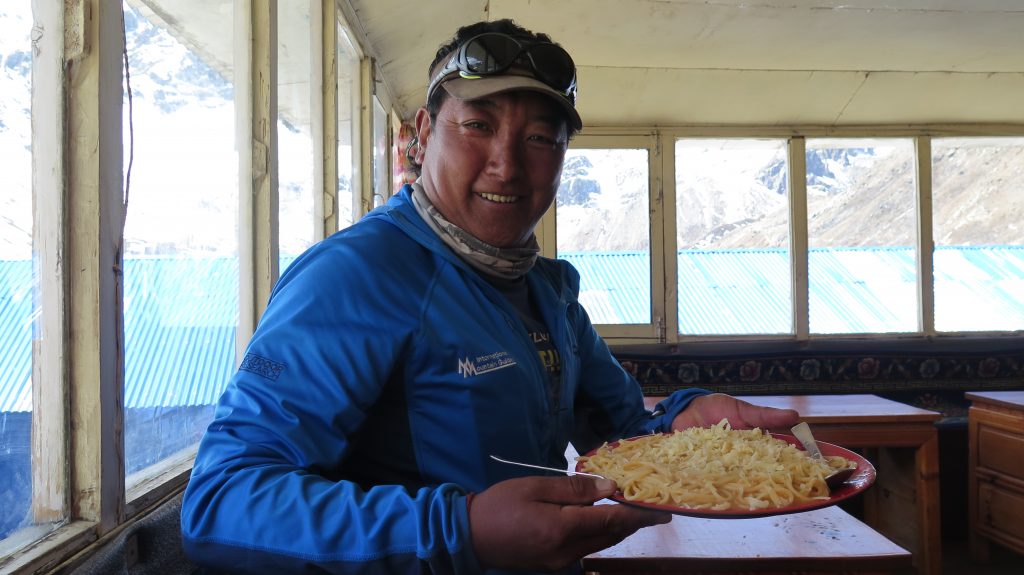 Trekking to Gokyo is like turning back the clock 25 or more years. Yes, there is wifi and electricity now. But the lodges are simpler, smaller and we all huddle around the yak dung fire to stay warm in the evening. Lodges are run by families, so their kids run around and we all practice different languages a bit, usually with mixed results, but always with mutual smiles. Acrid smoke from the yak dung fire pulls you back through the centuries.
Trekking to Gokyo is like turning back the clock 25 or more years. Yes, there is wifi and electricity now. But the lodges are simpler, smaller and we all huddle around the yak dung fire to stay warm in the evening. Lodges are run by families, so their kids run around and we all practice different languages a bit, usually with mixed results, but always with mutual smiles. Acrid smoke from the yak dung fire pulls you back through the centuries.
We have walked from a low point of 9,000 feet to our current lodge at 15,600 feet in Gokyo. We take rest days every second or third day to let our bodies slowly acclimatize. Along the way, we’ve seen griffins, wild sheep and more. Last night while watching my favorite constellation, Orion, drift across a frozen lake, I heard weird high-pitched animal noises. I called Phinjo away from the cozy fire, and everyone joined him. It was the call of a Himalayan wild cat (not from its much bigger cousin, the snow leopard).
Trekking is often fun, and a rich cultural experience which exposes you to some spectacular mountain places. It can also be uncomfortable when your stomach is upset, there is no running water, and the trekker in the next room snores loudly. All this trekking has another purpose – to get us ready for climbing higher. In just two more days, I will rejoin my IMG teammates and get ready to begin climbing.
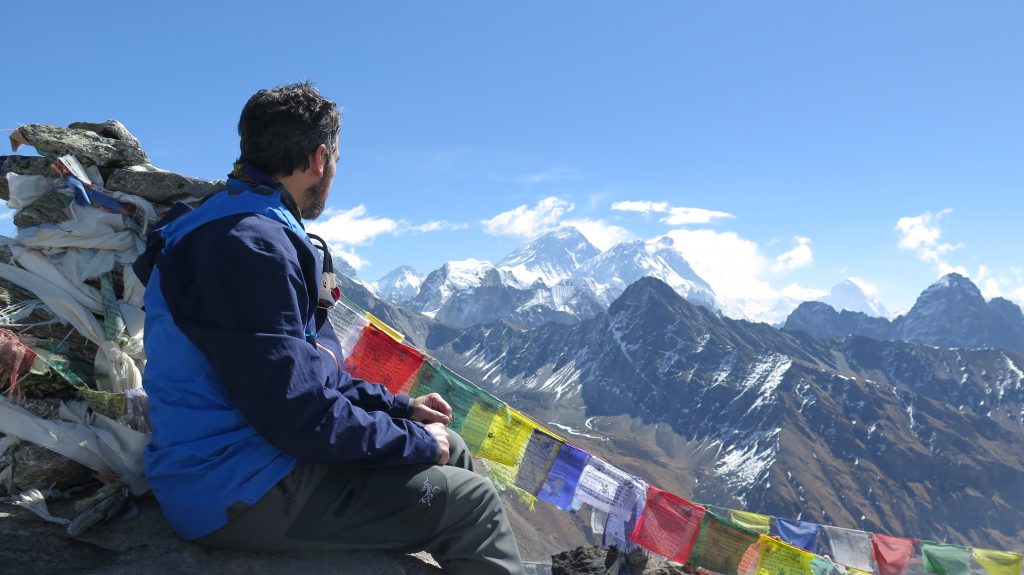 TRAINING
TRAINING
Since we have been on this Everest trip for over two weeks already, it may seem a bit late to still be training. ? Yes, I am no longer counting sets, reps or laps! But I am most definitely still training. I’m training my body to adapt to ever lower oxygen levels and to the harsh environments of high altitude. When we hike uphill and my heart begins pounding in my chest I focus on controlling my pace and heart rate to match my oxygen intake. I must find a sustainable climbing rate that I can continue for hours. Going too fast brings lots of physical and mental penalties and those must be avoided.
I’m still training to refine many small systems so that I’ll be efficient later up on Everest. We’ve got systems for socks, suncream, and snacks. We have systems for cameras, clothing, and crampons.
Most of all, I am training mentally and spiritually. I’m working to be present. I am working to not get flustered when the weather or my stomach turns temporarily sour. There are going to be some great days ahead, and there are going to be some hard ones too. So, I must train myself to stay calm, to adapt, to persevere. I must learn to accept what is actually happening, and not to yearn for what I wanted or what I planned on happening.
Climbers call this “taking what the mountain gives you”. It’s tricky balancing your drives with taking what is given. This part of high-altitude climbing has great value in our daily lives and careers back down low.
Yesterday we did a steep hike right outside the lodge door here in Gokyo. Gokyo is the last and highest village in the valley, so we started at an elevation of 15,600 feet. After walking 200 meters on a rocky and yak-dung covered trail, we started uphill.
Up, up, up it went as we gained 2,000 feet in just about one mile. For you mountain athletes in Colorado, it’s quite similar to the famous Incline trail near Colorado Springs. Except it sits 9,000 feet higher!
The weather was clear so, in every direction we looked, massive mountains seemed to pop out from a deep blue sky. I focused on following Phinjo’s heels and matching his steady pace.
Ignore the altimeter. Pay attention to how you feel. I maintained the discipline to take short fluid breaks every 30 minutes or so, and I was happy to feel that I did not need a rest. So, we kept grinding our way uphill. Feel your heart. Listen to your breathing. I need to get this right. This is the final training for Everest.
In less than two hours, we pulled onto the rocky summit of Gokyo Ri at 17,650 feet. When I saw the fluttering prayer flags, I smiled. I felt good. We could see four of the highest mountains in the world, including Everest, just 20 miles farther east.
After 30 luxurious minutes taking in the views, we started down. The pace felt unhurried, but we managed to descend 2,000 feet in about 50 minutes. One knee ached a tad, but all was well. It was a wonderful day.
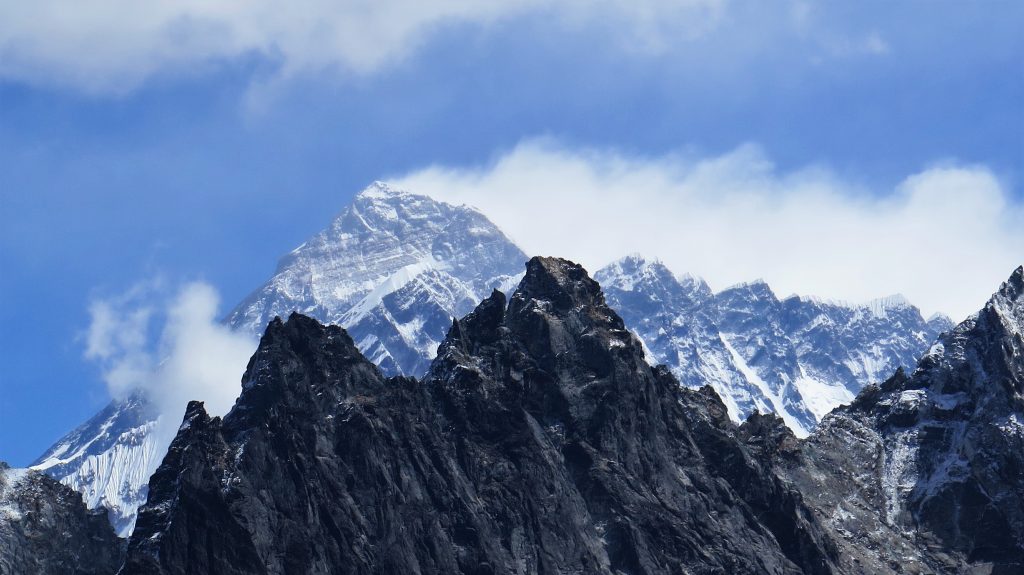 Very soon the trekking and training will end. Very soon the climbing of Mount Everest will begin.
Very soon the trekking and training will end. Very soon the climbing of Mount Everest will begin.
